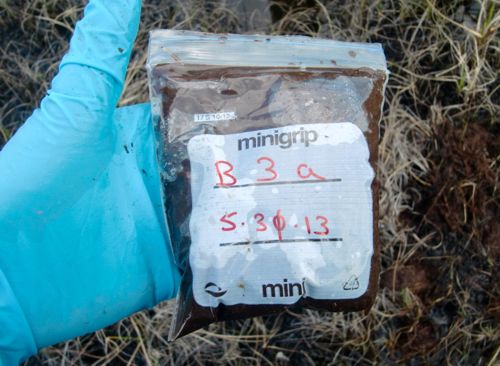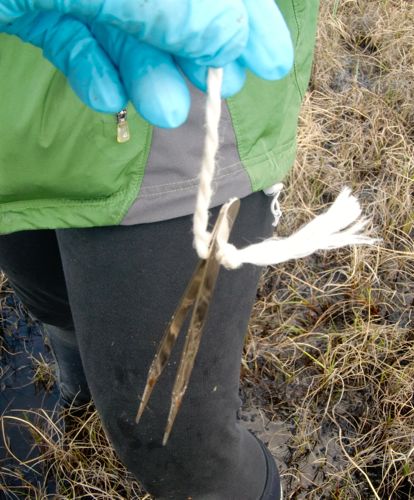Once a week we are also taking soil samples at the Petsikko wetlands. Kim will later analyze both the DNA and the RNA in each sample. The DNA will provide information about exactly what species of soil microbes are present in the sample. The RNA will tell which of the soil microbes are active at the time the sample is taken. At any given time, many soil microbes are inactive, because conditions (such as temperature, pH, and/or conductivity) are not optimal for them.
DNA vs. RNA
Each species of soil microbe has its own DNA signature (remember, DNA = deoxyribonucleic acid). When cells divide, the DNA of the cell must be copied. The RNA (ribonucleic acid) is instrumental in copying (or replicating) the DNA. So when cells divide (as seen by the presence of the RNA), you know that a particular species of soil microbe (identified by its DNA) is active at the time the soil sample was taken.
The Process
http://youtu.be/MIu-NaavTV4
Completed
Both the vials and bags of soil are immediately placed in a special deep freeze (around minus 112 degrees F.) Both DNA and RNA will deteriorate over time if they are not preserved as quickly as possible.

It's the Little Things...
Note our fancy "harness" for the tweezers. Kim said she had never dropped them into any wetland before I came. Happily she found them, so now we take precautions...

Field Day Bonus
Can you identify the sound on this video before the "Spoiler Alert" pops up? You need to be fast!
http://youtu.be/nBdG4XO8_p0


Comments